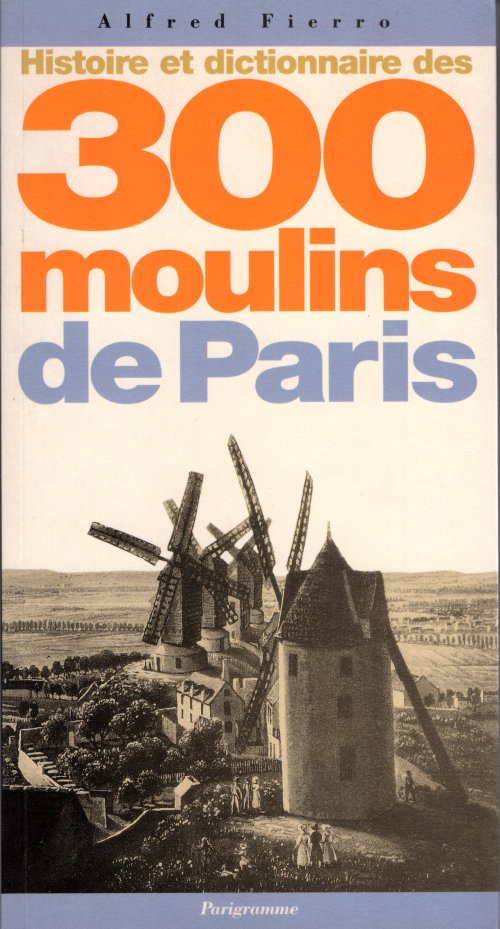Histoire et dictionnaire des 300 moulins de Paris
Full details
| English title | History and dictionary of 300 mills in Paris |
| Authors & editors | |
| Publisher | Parigramme |
| Year of publication | 1999 |
| Languages | French (main text) |
| Medium | Book |
| Edition | 1 |
| ISBN | 2840961148 |
| Topics | |
| Tags | |
| Scope & content | Summary Translation: A historical guide to 300 mills in Paris. Gives the history of mills from antiquity up until present day. Gives information on the first ‘mills’- millstones. Includes references to the Neolithic period. Mentions quern stones/ mill stones and Neanderthals using these or an equivalent to produce paint substances used in cave paintings. Information on grinding grain by hand or animal powered methods found in the Middle East and surrounding regions up to two thousand years before Christ. Mentions the Ancient Greek and Roman production of grain and use of technology.Includes information about primitive textiles as well as grain produced to make bread and other food types. Mentions the remains of “mill-like” structures found in Pompeii. Gives information on mills or similar constructions found in other parts of France, for example, Normandy- and the nature of the evidence. There has been evidence of a mill structure in Normandy in literature dating back to 1207. Mentions the existence of many wind mills, as many as 1300 by 1740. Includes a section on water mills- gives a history of the first mills found in the Middle East. Gives information on the first known water mill built in Italy during the reign of the Emperor Augustus. Information on Vitruvius and his inventions, ideas etc. - particularly in relation to water wheels. Includes a section on wind mills- unknown in the Ancient Roman world- windmills were invented in countries without water- the adaptation of mechanisms from water wheels to steps and Desert Mountains. The tradition says that Omar second caliph of Islam who reigned from 634-644, constructed a windmill by a Persian prisoner. Effectively within the confines of the mountainous Persian regions, Afghanistan, and Pakistan, windmills were invented. Information on the importance and functions of mills; the importance of the numbers of mills. Gives dates of the first mills and their importance amongst society. Also gives information on the class structures of France, and status associated with mills, i.e. wealthy people owned mills etc. Also gives examples of the first mentions of mills in Paris found in literature sources. Information on Paris- gives a history of the city. Gives the history of the Seine River. Discusses the main historical events of Paris- municipalities, the Revolution, political upheavals, the status of members of society and the place of mills within this history. The usage of water and wind-powered energy is also discussed. Argues that mills are an important part of the history of Paris, and of the human race in general, as they are a vital aspect of life amongst humans- for grain to produce breads etc. Gives information on the methods used in grain production. Lists other histories written about mills in Paris, for example by André Maillard but mentions that most of these were limited. For example the work published by André Maillard was limited to just mills within the Montmartre area of Paris. Gives an A-Z listing of locations of mills- gives information on how to find them, who constructed them and when (if known) their geographical locations and any other important pieces of information, such as key dates in the history of the mills. Includes a dictionary of milling terms and expressions associated with mills. |
Copies held
Accession no. 229942
- Shelf location: C111-FIE
- Advance notice required to view in person
Pictures

